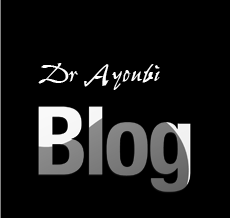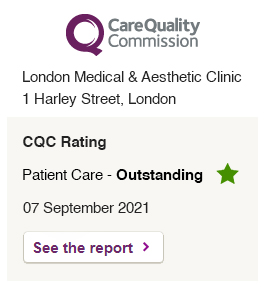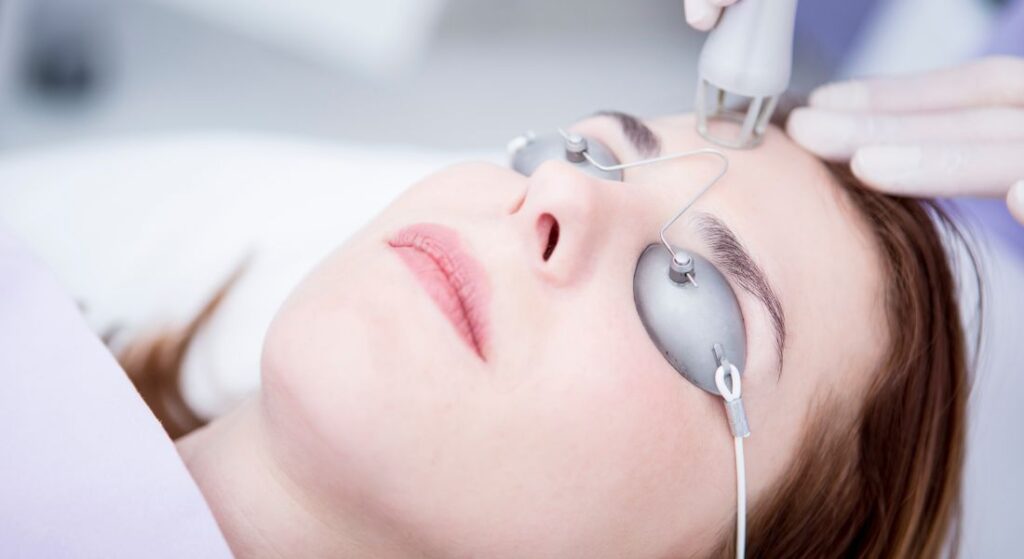
If you’ve been considering CO2 laser resurfacing, one of the biggest questions you might have is: “What’s the right age to do it?” It’s a fair question because this treatment is powerful, effective, and not something most people want to repeat too often.
The truth is, there’s no single “perfect age” for CO2 laser treatment. Instead, it depends on your skin condition, lifestyle, and personal goals. For some, it’s a preventative step in their 30s. For others, it’s a rejuvenation treatment in their 50s or 60s.
In this guide, I’ll break down the ideal age ranges for CO2 laser resurfacing, explain why skin condition often matters more than age, and help you figure out the right timing for you.
Understanding CO2 Laser Resurfacing
CO2 laser resurfacing works by using targeted beams of light to remove layers of damaged skin and stimulate collagen production. It’s one of the most effective treatments for:
– Fine lines and wrinkles.
– Sun damage and pigmentation.
– Acne scars and other textural issues.
– Loose or sagging skin.
Because it’s so powerful, CO2 laser is often recommended for people who want noticeable results that last longer than chemical peels or microneedling.
Age Isn’t the Only Factor
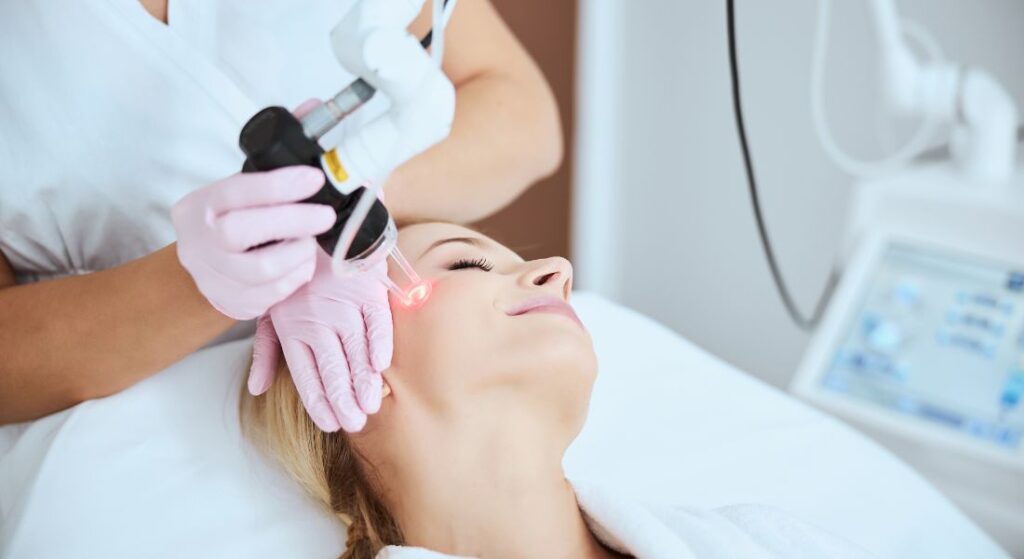
Many people think CO2 laser treatment is only for older adults. In reality, skin health is more important than the number on your birthday cake.
Here’s why:
– Some people in their early 30s already show sun damage from years of tanning.
– Others in their 50s may have taken excellent care of their skin and don’t need aggressive resurfacing yet.
– Genetics, skincare habits, and lifestyle all influence how your skin ages.
This means the “best age” for treatment is really the age when your skin concerns start to bother you enough to want change.
CO2 Laser in Your 20s
For most people in their 20s, CO2 laser resurfacing is generally not necessary. At this stage, the skin is still producing plenty of collagen and elastin, which help maintain firmness and elasticity. Fine lines or minor imperfections are usually very subtle, and in many cases, the skin can repair itself naturally with a good skincare routine.
However, there are certain situations where CO2 laser treatment may be worth considering even at a younger age. For example, individuals who have severe acne scarring may benefit from the deeper resurfacing effect of CO2 lasers, which can smooth out scar tissue and improve overall skin texture. Similarly, those who have experienced significant sun exposure or tanning at a young age may notice early sun damage, such as rough patches, pigmentation changes, or uneven skin tone, which can sometimes be addressed with CO2 laser resurfacing. Additionally, early pigmentation issues or other cosmetic concerns that affect confidence such as stubborn dark spots or uneven colour might also make CO2 laser a suitable option.
For most people in their 20s, though, less aggressive treatments are usually recommended. Options like chemical peels, microdermabrasion, or fractional non-ablative lasers can help improve skin texture and tone without the downtime and intensity of a full CO2 laser treatment. These gentler treatments are effective for maintaining healthy, youthful skin while addressing minor imperfections in a safe and manageable way.
CO2 Laser in Your 30s
Your 30s are often the decade when many people begin to notice the first visible signs of ageing. Fine lines may appear around the eyes and mouth, the skin can start to lose some of its natural elasticity, and previous sun exposure may begin to show through uneven pigmentation or subtle textural changes.
CO2 laser resurfacing in your 30s can be particularly beneficial because it addresses these early concerns before they become more pronounced. Specifically, CO2 laser treatment can:
– Smooth out early wrinkles and fine lines, helping to prevent them from deepening over time
– Improve overall skin tone and texture, reducing the appearance of uneven pigmentation or sun damage
At this age, the skin still heals relatively quickly, making recovery smoother compared to later decades. The treatment can be tailored to your specific concerns, whether that’s softening fine lines, tackling mild scarring, or improving skin radiance. Overall, CO2 laser in your 30s can be an effective way to maintain healthy, youthful-looking skin while proactively addressing the first signs of ageing.
CO2 Laser in Your 40s
By the time you reach your 40s, signs of ageing are usually more noticeable. Wrinkles around the eyes, mouth, and forehead deepen, pigmentation irregularities become more pronounced, and skin may begin to feel less firm and lose some of its youthful bounce. Sun damage accumulated over the years can also become more visible, contributing to an uneven tone and texture.
CO2 laser resurfacing is particularly popular for this age group because it can deliver significant improvements in both skin texture and appearance. The treatment can:
– Dramatically reduce fine lines and deeper wrinkles, smoothing the skin and softening facial contours
– Target accumulated sun damage, helping to even out skin tone and reduce the appearance of dark spots
– Restore a fresher, more youthful look by stimulating collagen production and improving overall skin quality
One key consideration in your 40s is recovery time. While the procedure is highly effective, the duration of healing varies depending on individual skin and clinician guidance, with redness and peeling gradually subsiding over time. For those balancing work, family, or social commitments, it’s important to plan the treatment around your schedule to allow sufficient time for recovery.
Overall, CO2 laser resurfacing in your 40s can be a powerful way to address multiple signs of ageing at once, helping you maintain a more rejuvenated and confident appearance.
CO2 Laser in Your 50s
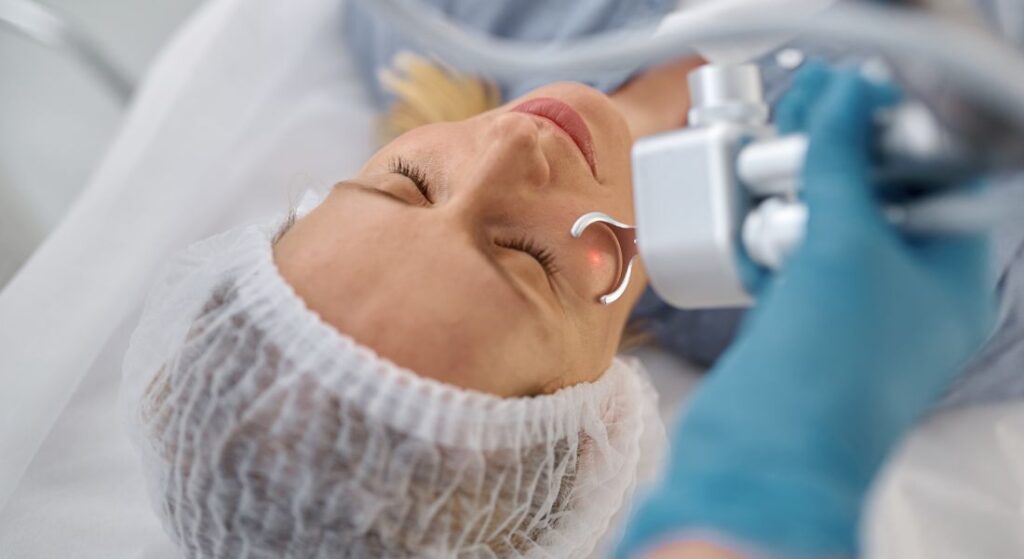
By your 50s, natural collagen production has slowed significantly, and many people feel that their skin no longer reflects the youthful energy they feel inside. Wrinkles and lines are often deeper, skin may appear thinner, and loss of elasticity can lead to sagging or less firm contours.
CO2 laser resurfacing can be particularly beneficial at this stage because it helps rejuvenate aging skin in multiple ways. Specifically, the treatment can:
– Provide a noticeable lift and tightening effect by stimulating collagen and elastin production
– Reduce deeper wrinkles, smoothing the texture of the skin and softening facial lines
– Improve overall skin tone and smoothness, addressing age spots, sun damage, and uneven pigmentation
However, there are some considerations to keep in mind. Recovery may take longer than in younger decades, and the timeline depends on individual healing and guidance from your clinician to ensure safe and effective results. Additionally, if skin laxity is severe, results may be less dramatic on their own. In such cases, combining CO2 laser with complementary treatments such as dermal fillers, Botox, or even surgical procedures can provide the most noticeable and long-lasting improvement.
Overall, CO2 laser in your 50s can still offer significant rejuvenation, helping you restore a fresher, more youthful appearance while maintaining natural facial contours.
CO2 Laser in Your 60s and Beyond
You might wonder if it’s too late for CO2 laser resurfacing once you reach your 60s or 70s. The good news is that it’s not. Many patients in this age group still achieve excellent results, with noticeable improvements in skin texture, tone, and overall appearance.
Even in your 60s and beyond, CO2 laser can refresh your complexion and enhance confidence. While results are gradual and recovery varies depending on individual healing and clinician guidance, combining treatments such as fillers or skin-tightening procedures can maximise rejuvenation and help you look and feel your best.
Despite these considerations, CO2 laser can still offer significant benefits. The treatment can make skin appear healthier, smoother, and more refreshed, reducing the visibility of fine lines, sun damage, and age spots. For older patients, CO2 laser is often combined with other treatments such as fillers, Botox, or skin-tightening procedures to achieve optimal results.
In short, while the treatment in your 60s and beyond requires careful planning and realistic expectations, it can still provide a rejuvenated and more youthful-looking complexion, helping you feel confident in your skin at any age.
Other Factors That Influence Timing
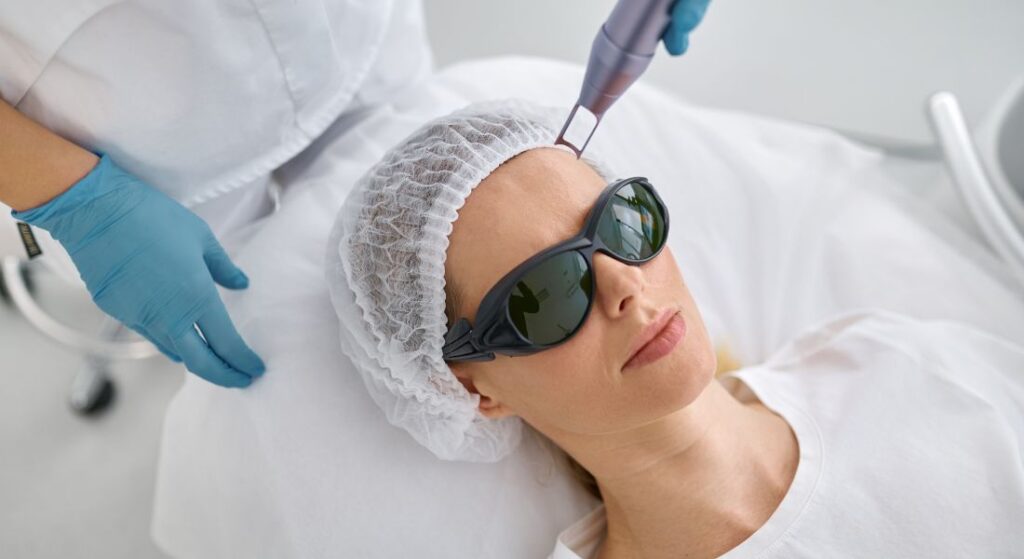
While age is a key consideration, several other factors can affect whether CO2 laser resurfacing is right for you and when to schedule it.
Skin Type
Skin tone can influence both the effectiveness and safety of CO2 laser treatments. Fair to medium skin tones generally respond best, with a lower risk of complications. Darker skin tones carry a higher risk of pigmentation changes, so careful assessment and pre-treatment planning are essential to reduce potential side effects.
Lifestyle
Your lifestyle plays an important role in recovery and long-term results. If you spend a lot of time outdoors or in the sun, you will need to commit to strict sun protection after treatment. Sun exposure can increase the risk of pigmentation issues and affect the longevity of your results.
Health Conditions
Certain medical conditions may make CO2 laser resurfacing unsuitable. People with diabetes, autoimmune disorders, or a history of keloid or hypertrophic scarring may face increased risks of delayed healing or complications. Always discuss your full medical history with your dermatologist or surgeon before proceeding.
Recovery Time
CO2 laser resurfacing typically requires 1–2 weeks of downtime for the skin to heal and redness to subside. It’s important to consider your work schedule, social commitments, and personal responsibilities before booking the procedure. Timing your treatment to allow adequate recovery is just as crucial as choosing the right age.
By taking these factors into account alongside your age, you can make a more informed decision about whether CO2 laser resurfacing is the right step for your skin.
Benefits of Starting Earlier vs Later
Deciding when to undergo CO2 laser resurfacing involves weighing the benefits and drawbacks of starting earlier versus later in life. Both approaches have their advantages depending on your skin goals and lifestyle.
Earlier (30s–40s)
– Healing tends to be quicker, with less downtime and faster recovery
– Treatment can help prevent deeper wrinkles, fine lines, and sun damage from worsening
– Fewer sessions may be needed in the long term to maintain youthful-looking skin
– Acts as a proactive approach, helping to slow visible signs of ageing before they become more pronounced
Later (50s–70s)
– Offers more dramatic improvement for existing deep wrinkles, sun damage, and pigmentation issues
– Can restore a fresher, more youthful appearance even when signs of ageing are more advanced
– Recovery may take longer, and the risk of side effects like prolonged redness, pigmentation changes, or scarring is slightly higher
– Sometimes requires combination treatments (fillers, Botox, or minor procedures) for optimal results
Ultimately, the right time for CO2 laser resurfacing is highly individual. The ideal age is when the potential benefits outweigh the risks and align with your personal goals, lifestyle, and willingness to manage recovery. Consulting with a qualified dermatologist or laser specialist can help you determine the timing and approach that will deliver the best outcome for your skin.
Alternatives at Different Ages
If you’re not quite ready for CO2 laser resurfacing or if it’s not the right fit for your skin at the moment there are several effective alternatives available. The best option often depends on your age, skin type, and specific concerns:
– 20s: At this stage, preventative and mild treatments are usually sufficient. Options include chemical peels to improve skin texture and tone, microneedling to stimulate collagen, and maintaining a consistent skincare routine with sunscreen, antioxidants, and moisturisers to protect and nourish your skin.
– 30s: Non-ablative lasers can help address early wrinkles and pigmentation with minimal downtime. Light chemical peels can improve skin brightness and texture, while targeted injectables, such as Botox or small fillers, can smooth early lines and prevent them from worsening.
– 40s–50s: Fractional CO2 lasers are an excellent option for those who want results similar to traditional CO2 resurfacing but with milder downtime. Combination treatments such as lasers with fillers, Botox, or radiofrequency can effectively tackle multiple signs of ageing, from fine lines and wrinkles to pigmentation and mild sagging.
– 60s+: At this age, surgical interventions may become a consideration for addressing significant sagging or skin laxity. CO2 laser can still be used alongside surgery or less invasive procedures to refine skin texture, reduce pigmentation, and restore a healthier, more youthful appearance.
These alternatives provide flexible ways to care for your skin at every stage of life. They can help bridge the gap until you’re ready for a more intensive treatment like CO2 laser resurfacing, ensuring your skin stays healthy, smooth, and rejuvenated over time.
Why Professional Guidance Matters
While this article provides a general guide on CO2 laser resurfacing at different ages, it’s important to remember that only a consultation with a qualified clinician can determine the best timing and approach for your individual skin.
A professional assessment takes into account multiple factors, including your skin type, current condition, medical history, lifestyle, and personal goals. This ensures that the treatment plan is safe, effective, and tailored specifically to you.
If you’re considering CO2 laser treatment in London, seeking expert guidance is the most reliable way to understand whether now is the right time, what results you can realistically expect, and how to prepare for the procedure. A thorough consultation can also help you explore alternatives or complementary treatments, ensuring your skin looks its healthiest while minimising risks.
FAQs:
1. What is CO2 laser resurfacing?
CO2 laser resurfacing is a cosmetic procedure that uses focused beams of light to remove damaged skin layers and stimulate collagen production. It helps improve skin texture, reduce fine lines and wrinkles, address sun damage, pigmentation, and even acne scars. The laser precisely targets damaged areas without affecting surrounding skin, making it a highly effective treatment for rejuvenation.
2. At what age is CO2 laser treatment recommended?
There’s no single “perfect age” for CO2 laser. Some people start in their 30s to prevent deeper wrinkles, while others in their 50s or 60s use it to refresh their skin. The best timing depends on your concerns and goals your clinician can help you decide what’s right for you.
3. How long does the procedure take?
Treatment time varies depending on the area being resurfaced and the depth of the laser. A typical facial session may take anywhere from 30 to 90 minutes. Your clinician will discuss the expected duration during your consultation and tailor the treatment to your needs.
4. Is CO2 laser painful?
Patients usually experience a warming or stinging sensation during the procedure. Most clinics apply a topical numbing cream or local anaesthetic to minimise discomfort. After treatment, the skin may feel tender or sunburned for several days, which is a normal part of the healing process.
5. What is the recovery time after CO2 laser resurfacing?
Recovery depends on the intensity of the treatment. For full resurfacing, downtime is usually 1–2 weeks, during which redness, swelling, and peeling are common. Fractional or lighter treatments may have shorter recovery periods. Your clinician will provide specific post-care instructions to help your skin heal safely.
6. Are the results immediate?
Some improvement in skin texture and tone may be noticeable within a few days, but full results usually appear gradually over 2–3 months as collagen production increases. This gradual improvement helps the skin look naturally refreshed rather than overdone.
7. Are there any risks or side effects?
Like any procedure, CO2 laser resurfacing carries some risks. Common side effects include redness, swelling, mild peeling, and temporary changes in pigmentation. Rare complications can include scarring or prolonged discoloration, particularly in darker skin tones. Choosing a qualified clinician reduces these risks significantly.
8. Can CO2 laser be combined with other treatments?
Yes. For optimal results, CO2 laser can be combined with treatments like dermal fillers, Botox, or non-ablative lasers. Combining treatments allows clinicians to address multiple signs of ageing simultaneously, such as fine lines, volume loss, and uneven texture.
9. How should I prepare for CO2 laser resurfacing?
Preparation typically includes avoiding sun exposure for several weeks, stopping certain skincare products (like retinoids), and ensuring the skin is free of infections or active acne. Your clinician will provide a personalised pre-treatment plan to maximise safety and results.
10. How long do the results last?
CO2 laser results can be long-lasting, especially when combined with good skincare and sun protection. Improvements in texture, tone, and wrinkles can persist for several years. Periodic maintenance treatments may be recommended to sustain results and prevent new damage.
Final Thoughts: Is CO2 Laser Right for You?
CO2 laser resurfacing offers a highly effective, non-surgical way to rejuvenate your skin, improving texture, tone, and firmness while addressing wrinkles, pigmentation, and sun damage. Its collagen-stimulating effect delivers natural-looking results that can be tailored to your age, skin type, and personal goals.
While it won’t completely replace surgical procedures for severe sagging or deep lines, CO2 laser is ideal for those seeking gradual, long-lasting improvements that enhance their natural appearance. With a personalised treatment plan and careful monitoring, results can be noticeable and enduring, often reducing the need for more aggressive interventions later.
At London Medical & Aesthetic Clinic, our expert clinicians provide thorough consultations to assess your skin, recommend the safest and most effective approach, and guide you through every step of treatment and recovery. By tailoring the procedure to your skin condition and lifestyle, we help you achieve a refreshed, youthful complexion while maintaining a natural, healthy look.
If you’re considering CO2 laser treatment in London, a consultation with our team at London Medical & Aesthetic Clinic is the safest, most reliable way to determine the right timing and approach for your skin.
References:
1. Wang, H., et al. (2020). “CO₂ lattice laser reverses skin aging caused by UVB.” Photodermatology, Photoimmunology & Photomedicine, 36(5), 314–320. https://pmc.ncbi.nlm.nih.gov/articles/PMC7202480/
2. Guo, H., et al. (2023). “Dynamic panoramic presentation of skin function after fractional CO₂ laser treatment.” Journal of Cosmetic Dermatology, 22(5), 1414–1422. https://www.sciencedirect.com/science/article/pii/S258900422301636X
3. Haykal, D., et al. (2024). “Advancements in laser technologies for skin rejuvenation.” Journal of Cosmetic Dermatology, 23(2), 123–130. https://onlinelibrary.wiley.com/doi/10.1111/jocd.16514
4. Wu, X., et al. (2025). “An effective and safe laser treatment strategy of CO₂ AFL for periorbital wrinkles in the Chinese population. https://link.springer.com/article/10.1007/s13555-025-01404-3
5. Yumeen, S. (2023). “Laser Carbon Dioxide Resurfacing.” StatPearls. https://www.ncbi.nlm.nih.gov/books/NBK560544/

